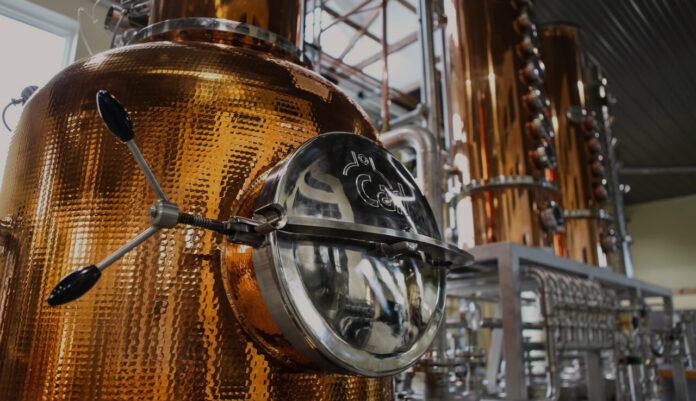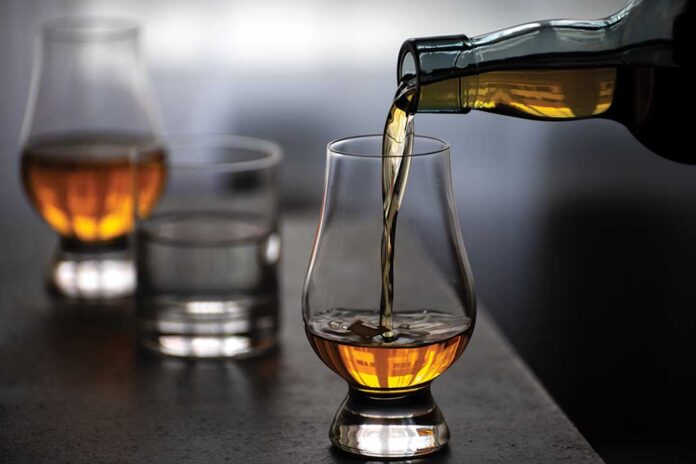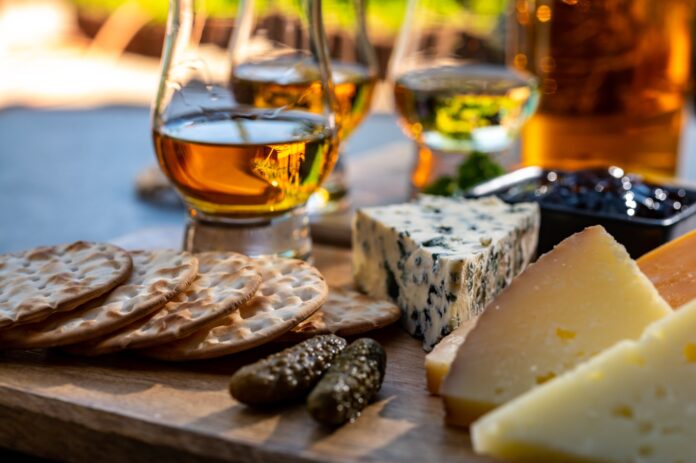The complexity of single malt whisky is what sets it apart from other types of whisky and makes it stand out to connoisseurs. This bevrage is made from malted barley and is usually distilled at a single distillery. It is typically aged in oak barrels, giving it a deep flavor and aroma. As a result, single malt whiskies tend to have intense and distinctive flavors that can range from sweet and fruity to smoky and peaty.
As a result, every single malt has its own unique flavor profile. With this in mind, let’s take a look into the complexities of this drink and explore its many layers. We’ll look at the different types of single malt whisky, the process of making it, and the flavor profiles that make it special. By the end of this post, you will have a better understanding of what sets it apart.
Different Types of Single Malt Whiskies

Single malt whiskies are an incredibly diverse variety of spirits, each with its own unique flavor and character. They are made from malted barley and distilled in pot stills with no other grains or additives. Single malt whiskies have a distinct body and flavor that make them a sought-after spirit for many aficionados.
Within the category, there are three main types: Highland, Speyside, and Islay. Highland whiskies are the most common and the most diverse, with attributes ranging from light and floral to smoky and peaty. Speyside whiskies are typically lighter and fruitier than Highland whiskies, with a sweeter flavor and subtle smokiness. Islay whiskey is a type of single malt whisky that originates from the island of Islay in Scotland. Islay whiskies are renowned for their strong, fruity, and smoky flavor, which is created by the combination of the island’s peaty soil and the surrounding ocean.
Distilling and Maturation Process

Single Malt Whiskies are some of the most sought-after spirits in the world. This type of whiskey is made with 100% malted barley and no other grains or additives. Its distinct flavor and aroma are the result of a carefully crafted distillation and maturation process.
The distillation process begins with the fermentation of malted barley and water. The combination of these ingredients produces a liquid that is then distilled to a high-proof spirit. The spirit is then transferred to oak casks or barrels for aging, which is the maturation process. During this time, the whiskey is exposed to oxygen and takes on the flavors and aromas of the wood.
Taste Profile Variations
Single Malt Whiskies are some of the most popular and diverse spirits in the world. These finely crafted whiskies can exhibit a wide range of flavor profiles, from the rich, smoky notes of the Islay malts to the light and subtle flavors of the Lowlands. Depending on the region it is distilled in, the distillation process, and the type of cask used for aging, the flavor of Single Malt Whiskies can vary greatly.
The Art of Blending

The art of blending single malt whiskies is a centuries-old practice that has been perfected over time. Blending is the process of taking two or more single malts, often from different distilleries, and combining them to create a new and unique flavor profile. This art form requires knowledge and finesse, as the blend must be perfectly balanced in order to achieve the desired result. It’s traditionally done by a master blender, who carefully selects and combines every single malt to create the perfect blend. This process is not only a science but also an art form, as the flavor of each whisky must be taken into consideration to achieve the desired taste.
Tasting

Tasting single-malt whisky is a truly unique experience. It is about discovering the complexity and beauty of Scotch whisky, one sip at a time. Most connoisseurs consider tasting whisky to be the pinnacle of their appreciation for the spirit.
Tasting whisky requires knowledge, preparation and an understanding of how your senses interact with the flavor elements in different styles of whiskies. Remember, there can be wild variations from one distillery to another even with single malts whiskies that are made from largely similar ingredients and processes.
Before you start tasting, familiarize yourself with some of the terminologies that are used in describing spirits, palettes, and flavors such as sweet, fruity, and smoky or peaty. Knowing what to expect will help you evaluate a spirit’s nose (smell), palate (taste), or finish (aftertaste).
Whisky should always be served neat (without ice or mixers) at room temperature to reach its full potential. Sniffing your whisky before taking your first sip helps open up notes that might otherwise remain hidden at the back of your throat on impact. Swirl the liquid gently in your glass then note any aromas before taking your first sip. While slowly swishing it around your mouth look for flavors including sweet and sour notes as well as grassy or woody accents, feel for tannins on the tongue or flush on the face that represent differing levels of astringency and bitterness before swallowing it down!
Pairing Single Malt with Food and Drinks

Beyond the myriad of tasting notes characteristic of single malt whiskies such as honey, toffee, leather, and smoke, for many a dram of single malt whisky is about pairing it with food. The range of distinct to multifaceted flavors found in single-malt whisky makes this spirit unique and wonderfully complex.
When looking at pairing it with food, considering the meaning of balance is key. Finding complementary flavors that mix like they were made for each other is what you are looking for in successful pairings. Rich and full-bodied flavors such as sherry cask matured whiskies team up marvelously with grilled beef, lamb chops, or game. Delicate coastal malts may be perfect for accompanying seafood dishes such as smoked salmon or trout.
While some desserts with chocolate and caramelized fruits may be exquisite when paired with a light-bodied cask strength single malt though not overly sweet themselves!
It’s important to experiment when creating new pairings as the point can always be lost if one flavor dominates too much over another. Becoming familiar with single malts from different regions can help you decide what kind of food pairing would harmonize the best. If you’re ever stuck on how to pair particular whiskies here are some suggestions:
- Highland Park pairs nicely with dark chocolate truffles;
- Glengoyne 12 Year matches up well with smoked pheasant;
- Bowmore 15 Year is great when coupled with buttery scallops;
- Glenfiddich Haberge 12 Year goes nicely alongside oven-roasted pork tenderloin;
- Auchentoshan Three Wood shines alongside venison steak;
- Laphroaig Quarter Cask stands out next to oatcakes topped with Camembert cheese;
Experimenting and finding that perfect single malt and food pairing while savoring its complex notes makes every occasion special!
Conclusion
In conclusion, single malt whisky is a complex spirit distilled from malted barley and aged in oak barrels. Its complexity of character comes from the range of production techniques employed by distilleries, including the type of still used, the length and location of maturation, and any additional treatments that are applied.
Those who are interested in learning more about single malt whisky can explore the various distilleries located throughout Scotland to discover their distinct offerings. No matter what your preference may be, chances are you’ll find a single malt whisky that appeals to your palate and brings enjoyment to even the most discerning tasters.








